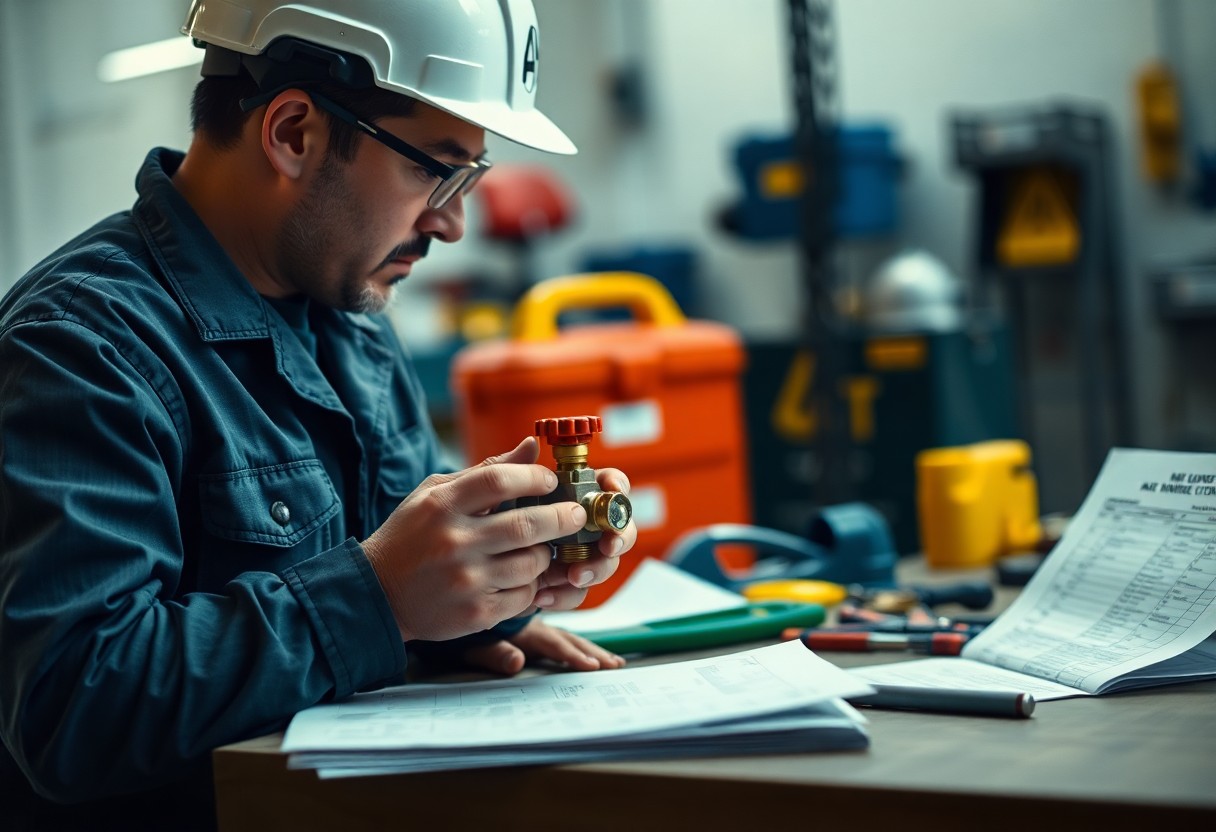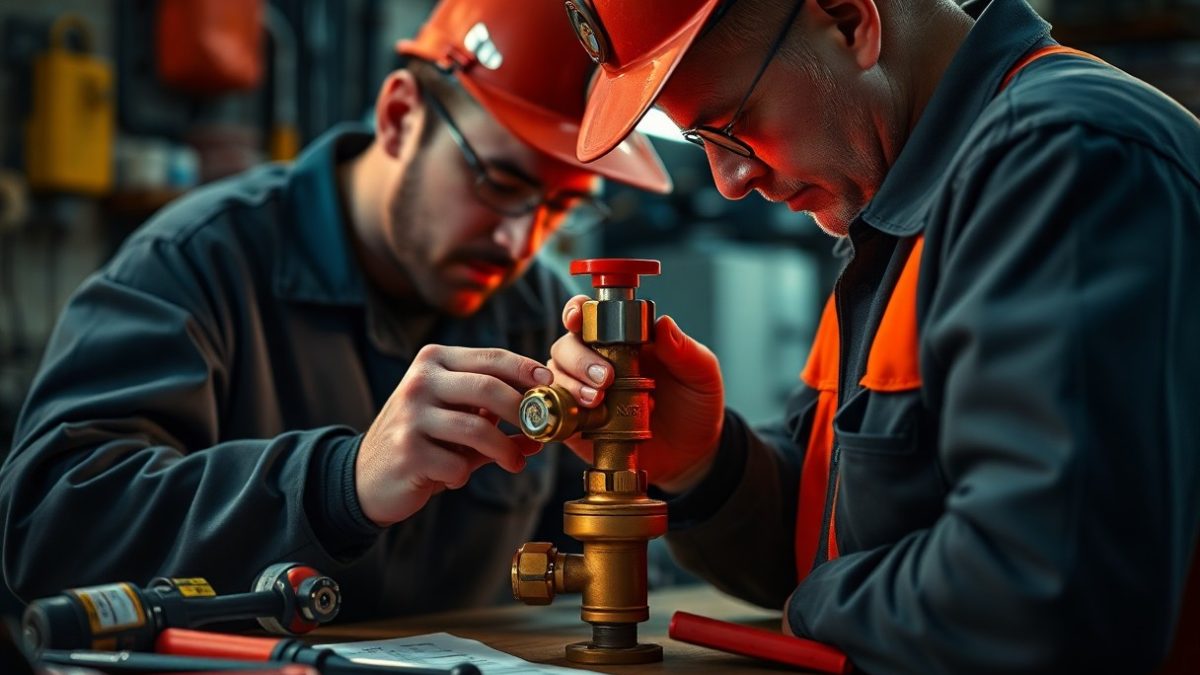
How Can The Tapestry Of Smart Technology Transform Traditional Appliance Installations?
November 8, 2024
How Can You Ensure The Palladium Of Compliance In Your Appliance Installations?
November 12, 2024With gas line installations, it’s vital that you pay close attention to the subtle nuances that can impact safety and efficiency. From understanding the specific regulations in your area to recognizing the importance of proper material selection, these details can significantly affect your system’s performance. Gaining insight into potential hazards, ensuring compliance with local codes, and knowing the signs of wear in existing lines are all paramount for a successful installation. This guide aims to equip you with the knowledge to approach gas line inspections with confidence and precision.
Importance of Gas Line Inspections
While many homeowners may overlook gas line inspections, they are crucial for ensuring the safety and efficiency of your gas systems. Inspections help identify potential issues before they become serious problems, protecting your home and belongings. By recognizing the importance of routine checks, you can prevent gas leaks that could lead to hazardous situations or costly repairs down the line.
Safety Considerations
About ensuring the safety of your home, gas line inspections serve as a vital step in mitigating risks associated with gas leaks. Regular inspections can uncover leaks or worn-out fittings, allowing you to address issues proactively. By prioritizing these checks, you significantly decrease the potential for dangerous accidents and enhance your peace of mind regarding your home environment.
Regulatory Compliance
One reason gas line inspections should not be overlooked is the importance of adhering to local regulations. Many jurisdictions require inspections to ensure that all installations meet safety standards—if you neglect this aspect, you may face penalties or, worse, put your family at risk.
But by staying informed about regulatory requirements and ensuring that your gas lines comply, you not only protect yourself from potential fines but also enhance the safety of your home. Engaging a qualified inspector helps verify that your installation adheres to the latest codes, which can ultimately give you the confidence that your gas systems are both safe and legal.
Common Nuances in Gas Line Materials
Clearly, understanding the various types of materials used in gas line installations is necessary for ensuring safety and functionality. Different materials have unique properties that affect their durability, flexibility, and suitability for specific environments.
Types of Pipes and Their Properties
By familiarizing yourself with the various pipe materials, you can make informed decisions regarding installations:
| Pipe Material | Properties |
| Steel | Strong but susceptible to corrosion |
| Polyethylene | Highly durable and resistant to corrosion |
| Copper | Flexible and resistant to corrosion |
| CSST (Corrugated Stainless Steel Tubing) | Flexible and easy to install |
| Cast Iron | Heavy and long-lasting but difficult to install |
- Each material has its advantages and drawbacks that can impact your installation.
- Steel requires protective coatings to prevent corrosion.
- Polyethylene is often preferred for underground installations.
- Copper is popular for residential gas lines due to its flexibility.
- CSST simplifies the installation process around obstacles.
Perceiving these nuances will allow you to select the most appropriate material for your specific application.
Impact of Environmental Conditions
To ensure optimal performance of your gas line, it is important to consider how environmental factors can affect the chosen materials. Weather, soil composition, and potential exposure to chemicals can all impact the integrity of your gas line.
This awareness of environmental conditions will help you anticipate necessary precautions such as protective coatings or insulation. For example, areas prone to extreme temperatures may demand specially rated materials to withstand thermal expansion or contraction. Additionally, soil types may require diversification in pipe materials to prevent corrosion and ensure long-term reliability. Understanding these factors as you plan your gas line installations can significantly enhance the safety and durability of your system.

Installation Site Evaluation
It’s important to perform a thorough installation site evaluation before undertaking gas line inspections. This process involves assessing various factors that can impact safety and functionality. Ensure you familiarize yourself with the guidelines and practices by checking out Gas Service Line Inspections: Frequently Asked Questions for detailed information.
Soil Conditions
Conditions that affect soil stability and composition should be carefully evaluated prior to installation. The type of soil in your area can influence how deep the gas line needs to be buried, as well as how well it will hold up over time. Saturated soils or rocky terrains may require additional considerations to ensure proper support and prevent shifts.
Proximity to Structures
Against nearby structures, the placement of gas lines is vital for safety. It’s important to observe local regulations regarding minimum distances from buildings, fences, and other installations. Having a safe distance can minimize risks related to leaks and ensure that maintenance access is not hindered.
At times, you may need to take particular care with structures such as power lines, trees, or landscaping features that can encroach on the space needed for your gas lines. These factors will dictate not only the safety of the gas installation but also its long-term reliability and ease of access for future inspections or repairs.
Detection of Gas Leaks
For any gas line installation, the detection of gas leaks is paramount. Identifying potential leaks early can prevent accidents, ensure safety, and maintain the integrity of your gas system. You should prioritize gas leak detection as a vital component of your inspection process, ensuring peace of mind and protection for your property and loved ones.
Methods for Leak Detection
Around the globe, various methods for gas leak detection are employed to ensure safety. Traditional techniques include using soapy water to identify leaks visually, while modern methods involve electronic gas detectors and infrared cameras. Each technique offers unique advantages, and combining them can enhance your overall detection strategy.
Importance of Regular Monitoring
At the heart of effective gas line safety lies the importance of regular monitoring. Routine checks enable you to spot any leaks before they escalate into serious issues, safeguarding your home and occupants. By integrating consistent inspections into your maintenance routine, you can enhance the reliability and efficiency of your gas system.
The significance of regular monitoring cannot be overstated. By scheduling periodic inspections, you ensure that your gas lines remain in optimal condition, deterring the likelihood of leaks and enhancing your system’s longevity. Additionally, proactive monitoring minimizes potential hazards and keeps you informed about the state of your gas infrastructure, ultimately leading to safer living conditions.
Professional Standards and Best Practices
Your gas line inspection process should adhere to established professional standards and best practices to ensure safety and efficiency. This not only enhances the integrity of your installation but also serves to protect both the technicians involved and the occupants of the property. By employing the right methods and maintaining a high level of professionalism, you can mitigate risks and maximize the reliability of your gas lines.
Qualified Personnel Requirements
Before commencing any gas line inspection, it is vital to engage qualified personnel who possess the necessary certifications and training to carry out these vital assessments. Adequately trained professionals are equipped to identify potential hazards, evaluate the condition of existing lines, and make informed decisions regarding installation protocols.
Industry Standards Adherence
Below the surface of any gas line installation lies a framework of industry standards that dictate the practices you should follow. Adhering to these regulations not only ensures compliance but also fosters safety throughout the installation process.
The adherence to industry standards guarantees that your gas line installation aligns with local, state, and national regulations. This compliance not only minimizes legal consequences but also enhances public safety and trust. Standards set forth by organizations such as the American National Standards Institute (ANSI) and the National Fire Protection Association (NFPA) serve as benchmarks, covering everything from material selection to installation techniques. By following these guidelines, you can assure stakeholders of the integrity and reliability of your gas lines, thereby promoting a safe environment for everyone involved.
Post-Installation Considerations
Not all gas line inspections end once the installation is complete; there are follow-up measures to ensure safety and functionality. You should understand that ongoing assessments, maintenance, and monitoring will help you catch any potential issues early on, protecting your property and family.
Pressure Testing Protocols
An effective pressure testing protocol is vital for verifying the integrity of your newly installed gas lines. You want to ensure that tests are conducted under controlled conditions, allowing you to detect any leaks or weaknesses in the system, assuring reliable long-term performance.
Documentation and Reporting
For a thorough understanding of your gas line installation, accurate documentation and reporting are vital. You should maintain detailed records of all inspections, tests, and maintenance performed, creating a comprehensive log for future reference and compliance with local regulations.
Understanding the importance of documentation extends beyond just paperwork; it ensures that you have a transparent history of your gas line safety measures. When records are properly documented, you can easily reference past inspections, which can aid in troubleshooting future issues. Furthermore, compliance with local laws may necessitate these reports, making it vital for safety and legal adherence alike.
To wrap up
To wrap up, acknowledging subtle nuances in gas line inspections before installation is important for ensuring safety and compliance. You should consider factors such as local codes, material compatibility, and potential environmental impacts. Additionally, assessing existing infrastructure and conducting thorough pressure tests can help prevent future complications. Engaging with certified professionals who understand these intricacies will enhance the reliability of your gas system and minimize risks, ultimately safeguarding your home and loved ones.

